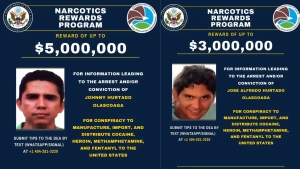La Nueva Familia Michoacana (LNFM), or “The New Michoacán Family,” is one of Mexico’s most notorious and resilient criminal organizations, known for its involvement in drug trafficking, extortion, and extreme violence. Emerging from the remnants of the original La Familia Michoacana cartel, LNFM has carved out a significant place in Mexico’s criminal landscape, particularly in the states of Michoacán, Guerrero, and the State of Mexico. This blog explores the history, evolution, and current status of La Nueva Familia Michoacana, shedding light on its origins, key figures, and impact.
Origins: The Rise of La Familia Michoacana
The roots of La Nueva Familia Michoacana trace back to the original La Familia Michoacana (LFM), a cartel that emerged in the 1980s in Michoacán, Mexico. Initially, LFM positioned itself as a vigilante group aimed at protecting local communities from rival drug cartels and bringing order to the region.  Founded by figures like Carlos Rosales Mendoza, a close associate of Gulf Cartel leader Osiel Cárdenas, LFM gained prominence in the 1990s as a paramilitary arm of the Gulf Cartel, working alongside the Zetas, a group of ex-military operatives.
Founded by figures like Carlos Rosales Mendoza, a close associate of Gulf Cartel leader Osiel Cárdenas, LFM gained prominence in the 1990s as a paramilitary arm of the Gulf Cartel, working alongside the Zetas, a group of ex-military operatives.
 Founded by figures like Carlos Rosales Mendoza, a close associate of Gulf Cartel leader Osiel Cárdenas, LFM gained prominence in the 1990s as a paramilitary arm of the Gulf Cartel, working alongside the Zetas, a group of ex-military operatives.
Founded by figures like Carlos Rosales Mendoza, a close associate of Gulf Cartel leader Osiel Cárdenas, LFM gained prominence in the 1990s as a paramilitary arm of the Gulf Cartel, working alongside the Zetas, a group of ex-military operatives.
By the early 2000s, under the leadership of Nazario Moreno González, alias “El Chayo” or “El Más Loco” (The Craziest One), LFM transformed into an independent drug trafficking organization. Moreno, a charismatic and quasi-religious leader, instilled a cult-like ideology in the group, requiring members to carry a “bible” of his sayings, conduct prayer sessions, and abstain from using the drugs they trafficked. This pseudo-religious ethos, combined with brutal tactics, made LFM a formidable force. In 2006, the cartel announced its independence from the Gulf Cartel and Zetas with a gruesome act: tossing five severed heads onto the dance floor of a nightclub in Uruapan, Michoacán, along with a note proclaiming “divine justice.”
At its peak, LFM was one of Mexico’s fastest-growing cartels, dominating methamphetamine production in Michoacán’s Tierra Caliente region and forging alliances with the Sinaloa Cartel. It also engaged in extortion, kidnapping, and political interference, allegedly backing candidates in local elections. However, internal divisions and external pressures began to weaken the group by the late 2000s.
The Decline of La Familia Michoacana and the Birth of LNFM
The original LFM suffered significant blows in the early 2010s. In 2010, Nazario Moreno was reported dead following a shootout with Mexican authorities, though his death was not confirmed until 2014.  His apparent demise led to a power struggle within the cartel. José de Jesús Méndez Vargas, alias “El Chango,” briefly took control but faced opposition from co-founders Enrique Plancarte Solís and Servando Gómez Martínez, alias “La Tuta.” This internal rift resulted in a splinter group, the Knights Templar (Caballeros Templarios), formed by Plancarte and Gómez in 2011, which further weakened LFM.
His apparent demise led to a power struggle within the cartel. José de Jesús Méndez Vargas, alias “El Chango,” briefly took control but faced opposition from co-founders Enrique Plancarte Solís and Servando Gómez Martínez, alias “La Tuta.” This internal rift resulted in a splinter group, the Knights Templar (Caballeros Templarios), formed by Plancarte and Gómez in 2011, which further weakened LFM.
 His apparent demise led to a power struggle within the cartel. José de Jesús Méndez Vargas, alias “El Chango,” briefly took control but faced opposition from co-founders Enrique Plancarte Solís and Servando Gómez Martínez, alias “La Tuta.” This internal rift resulted in a splinter group, the Knights Templar (Caballeros Templarios), formed by Plancarte and Gómez in 2011, which further weakened LFM.
His apparent demise led to a power struggle within the cartel. José de Jesús Méndez Vargas, alias “El Chango,” briefly took control but faced opposition from co-founders Enrique Plancarte Solís and Servando Gómez Martínez, alias “La Tuta.” This internal rift resulted in a splinter group, the Knights Templar (Caballeros Templarios), formed by Plancarte and Gómez in 2011, which further weakened LFM.
By 2011, Mexican authorities declared LFM “exterminated,” with El Chango’s arrest marking a low point for the cartel. However, remnants of the group persisted, regrouping under new leadership. Around 2011, La Nueva Familia Michoacana emerged as a distinct entity, distancing itself from the Knights Templar and the original LFM’s religious ideology. The new organization focused primarily on drug trafficking, extortion, and illegal mining, operating mainly in Michoacán, Guerrero, and the State of Mexico.
Leadership and Operations of La Nueva Familia Michoacana
LNFM is currently led by brothers Johnny Hurtado Olascoaga, alias “El Pez” (The Fish), and José Alfredo Hurtado Olascoaga, alias “El Fresa” (The Strawberry). The Hurtado Olascoaga family has deep ties to the original LFM, with their father, Ubaldo Hurtado, reportedly a close associate of Nazario Moreno. A grenade launcher inscribed with Moreno’s name, found in Ubaldo’s possession in 2012, symbolized this connection.

Under the Hurtado Olascoaga brothers, LNFM has expanded its criminal portfolio. The cartel is heavily involved in trafficking fentanyl, cocaine, methamphetamine, and heroin to the United States, with the U.S. Department of Treasury accusing it of producing “rainbow fentanyl” targeted at young users. Beyond drugs, LNFM engages in extortion, kidnapping, human smuggling, and illegal mining of resources like mercury and uranium. The group’s use of advanced weaponry, including drones and explosives, has made it a significant threat to Mexican security forces and rival cartels, particularly the Jalisco New Generation Cartel (CJNG).
LNFM operates in at least 35 municipalities in southern Mexico, with a stronghold in the Tierra Caliente region. Its financial operations are sophisticated, involving money laundering schemes such as purchasing used clothing in the U.S. for resale in Mexico. Adita Hurtado Olascoaga, a sibling of the co-leaders, has been sanctioned for overseeing such activities, while another brother, Ubaldo, manages hitmen and illegal mining operations.
Violence and Confrontations
LNFM is notorious for its extreme violence, continuing the brutal legacy of its predecessor. The cartel has clashed repeatedly with the CJNG, Knights Templar remnants, and Cárteles Unidos (CU), a coalition of smaller groups.  In 2022, a shootout in Texcaltitlán, State of Mexico, left 11 LNFM members dead, including a monkey dressed in a bulletproof vest, highlighting the group’s audacity. The cartel has also targeted Mexican security forces, ambushing police and killing officers in coordinated attacks.
In 2022, a shootout in Texcaltitlán, State of Mexico, left 11 LNFM members dead, including a monkey dressed in a bulletproof vest, highlighting the group’s audacity. The cartel has also targeted Mexican security forces, ambushing police and killing officers in coordinated attacks.
 In 2022, a shootout in Texcaltitlán, State of Mexico, left 11 LNFM members dead, including a monkey dressed in a bulletproof vest, highlighting the group’s audacity. The cartel has also targeted Mexican security forces, ambushing police and killing officers in coordinated attacks.
In 2022, a shootout in Texcaltitlán, State of Mexico, left 11 LNFM members dead, including a monkey dressed in a bulletproof vest, highlighting the group’s audacity. The cartel has also targeted Mexican security forces, ambushing police and killing officers in coordinated attacks.
The U.S. has designated LNFM a Foreign Terrorist Organization (FTO) and Specially Designated Global Terrorist (SDGT) in February 2025, reflecting its role in destabilizing the region. The group’s violence, including drone attacks and bombings, has terrorized communities, while its extortion of local businesses, including avocado producers, has disrupted economies in Michoacán and Guerrero.
U.S. and Mexican Responses
The U.S. has intensified efforts to dismantle LNFM, sanctioning the Hurtado Olascoaga brothers and other leaders under Executive Order 14059 for drug trafficking and human smuggling. In April 2025, a federal grand jury in Georgia indicted Johnny and José Alfredo for trafficking heroin, cocaine, methamphetamine, and fentanyl.  The U.S. State Department has offered rewards of $5 million and $3 million for information leading to their capture.
The U.S. State Department has offered rewards of $5 million and $3 million for information leading to their capture.
 The U.S. State Department has offered rewards of $5 million and $3 million for information leading to their capture.
The U.S. State Department has offered rewards of $5 million and $3 million for information leading to their capture.
Mexico, under President Claudia Sheinbaum, has collaborated with U.S. authorities, with the Financial Intelligence Unit supporting efforts to disrupt LNFM’s financial networks. However, the cartel’s deep ties to local communities and its ability to exploit economic vulnerabilities make it a persistent challenge.
Current Status and Outlook
Despite setbacks, La Nueva Familia Michoacana remains a powerful force, with some experts ranking it as Mexico’s third-largest cartel behind the Sinaloa Cartel and CJNG. Its ability to adapt, diversify revenue streams, and maintain familial leadership has ensured its survival. However, ongoing infighting, such as the murder of leader Eduardo Hernández Vera, alias “Lalo Mantecas,” reportedly ordered by Johnny Hurtado Olascoaga, suggests potential vulnerabilities.
The cartel’s reliance on violence and exploitation of marginalized communities has fueled local resistance, with some farmers and vigilante groups fighting back. Meanwhile, international pressure, particularly from the U.S., continues to target LNFM’s operations. Whether the cartel can maintain its influence amid these challenges remains uncertain, but its history of resilience suggests it will not disappear easily.
Conclusion
La Nueva Familia Michoacana is a product of Mexico’s complex criminal ecosystem, evolving from the quasi-religious La Familia Michoacana into a pragmatic and ruthless organization. Led by the Hurtado Olascoaga brothers, LNFM has adapted to changing dynamics, diversifying its criminal activities and maintaining a grip on southern Mexico. Its history reflects the broader challenges of combating organized crime in a region plagued by poverty, corruption, and weak governance. As U.S. and Mexican authorities escalate their efforts, the cartel’s future will depend on its ability to navigate internal divisions and external pressures while continuing to exploit the vulnerabilities of the communities it claims to represent.
